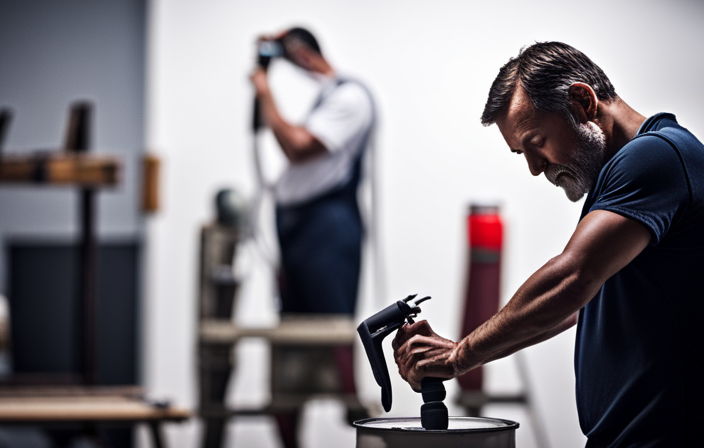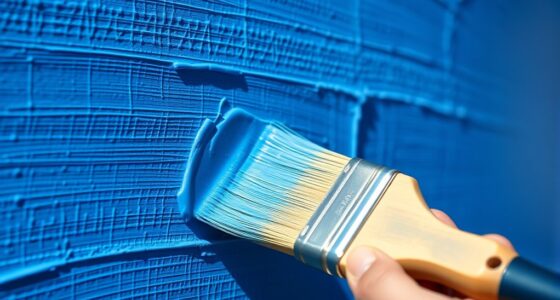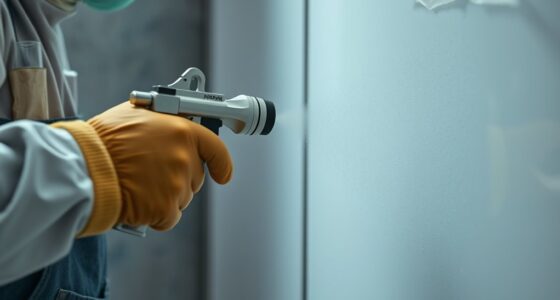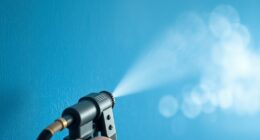Get ready to improve your painting abilities with an airless paint sprayer! These durable tools are created to accelerate and improve the effectiveness of your painting projects. Remember, it is crucial to properly maintain them.
Cleaning your airless paint sprayer might not be the most glamorous task, but neglecting it can lead to clogged nozzles, uneven spray patterns, and ultimately a frustrating painting experience. In this blog post, we’ll discuss some common mistakes to avoid when cleaning your airless paint sprayer so you can keep it in top-notch condition and achieve professional-quality results every time. So grab your overalls and let’s dive into the world of cleaning your airless paint sprayer!
Not Reading the Manual
When it comes to using any new tool or equipment, reading the manual might not be the most exciting part of the process. However, neglecting to read the manual for your airless paint sprayer can lead to some serious mishaps. Each airless paint sprayer is unique and may have specific instructions and recommendations that you need to be aware of.
The manual provides essential information on how to properly set up and operate your sprayer, as well as important safety guidelines. It will also outline the necessary steps for cleaning and maintenance. Skipping this step could result in improper use or even damage to your equipment.
By taking a few minutes to familiarize yourself with the manufacturer’s instructions, you’ll be able to understand how all the components work together and ensure that you’re getting optimal performance from your airless paint sprayer.
Remember, each model may have its own quirks or specific requirements when it comes to cleaning. So don’t skip over that handy little booklet – it holds valuable information that can save you time, money, and frustration down the line!
Not Flushing the Pump After Use
One of the most common mistakes people make when cleaning their airless paint sprayer is not flushing the pump after use. Flushing the pump is a crucial step that many users overlook, but it can have a big impact on the performance and longevity of your sprayer.
When you don’t flush the pump after using your airless paint sprayer, any leftover paint or residue can dry inside the system. This can lead to clogs and blockages in the nozzle or other parts of the sprayer, affecting its ability to spray smoothly and evenly.
To avoid this issue, it’s important to properly flush out your airless paint sprayer after each use. Start by removing any remaining paint from the container and pouring in a cleaning solution recommended by the manufacturer. Then, run clean water through the system until all traces of paint are gone.
By taking just a few extra minutes to flush out your pump after each use, you’ll ensure that it stays clean and free from clogs. This will not only improve its performance but also extend its lifespan, saving you time and money in the long run.
Remember, proper maintenance is key to getting optimal results from your airless paint sprayer. So don’t forget to flush that pump!
Not Cleaning the Nozzle Properly
One of the most common mistakes people make when cleaning their airless paint sprayer is not properly cleaning the nozzle. The nozzle is a crucial component of the sprayer, as it controls the flow and pattern of the paint. If it becomes clogged or dirty, it can result in uneven spray patterns and poor coverage.
To clean the nozzle effectively, you’ll need to remove it from the sprayer first. Start by disconnecting all power sources and relieving any pressure in the system. Then, using a wrench or pliers, carefully unscrew the nozzle from the gun.
Once removed, rinse off any excess paint with water or solvent (depending on your paint type) using a soft brush or cloth. Pay special attention to removing any dried-on paint that may be blocking the openings.
After rinsing, use a small needle or pin to gently clear out any remaining buildup inside each opening of the nozzle. Be careful not to damage or enlarge these openings during this process.
Reattach th nozzle and then run the paint sprayer for a few minutes to flush out any remaining buildup. With a clean nozzle, you should be ready to start spraying again!
Not Cleaning the Paint Filter Regularly
One important aspect of maintaining your airless paint sprayer is regularly cleaning the paint filter. The paint filter plays a crucial role in preventing debris and particles from clogging up your equipment, ensuring smooth and consistent spray patterns.
Why is it important to clean the paint filter regularly? Well, if you neglect this step, you may experience issues such as reduced pressure, uneven spray patterns, or even complete blockage of the nozzle. This can result in wasted time and frustration during your painting projects.
To clean the paint filter properly, start by removing it from the sprayer according to the manufacturer’s instructions. Rinse off any excess paint with warm water or an appropriate cleaning solution. Use a soft brush or cloth to remove any stubborn residue that may have accumulated on the surface of the filter.
Once cleaned, make sure to inspect for any signs of damage or wear. If necessary, replace the filter with a new one before reattaching it. By taking these simple steps and cleaning your paint filter regularly, you’ll ensure optimal performance and longevity of your airless paint sprayer.
Remember: Proper maintenance goes a long way in keeping your equipment in top shape! So don’t overlook this essential task when caring for your airless paint sprayer.
Not Keeping the Sprayer Cover Clean
One crucial mistake many people make when cleaning their airless paint sprayer is neglecting to keep the sprayer cover clean. While it may seem like a minor detail, keeping the cover of your sprayer free from dirt, dust, and debris can greatly impact its performance and longevity.
When you use your paint sprayer, it’s inevitable that some overspray will accumulate on the cover. If left uncleaned, this overspray can dry and harden over time, making it more difficult to remove later on. Additionally, a dirty sprayer cover can hinder proper airflow and ventilation during operation.
To prevent these issues, be sure to regularly wipe down the exterior of your airless paint sprayer after each use. Use a damp cloth or sponge to gently remove any excess paint or residue from the surface. For tougher stains or dried-on paint splatters, you may need to utilize a mild detergent or specialized cleaner recommended by the manufacturer.
Not only will maintaining a clean sprayer cover ensure optimal performance for future painting projects but also extend the lifespan of your equipment. So don’t overlook this simple yet essential step in caring for your airless paint sprayer!
Conclusion
When taking care of your airless paint sprayer, it’s important to remember the three key points outlined in this article: cleaning the paint filter regularly, keeping the sprayer cover clean, and keeping the equipment properly lubricated. By following
Properly cleaning your airless paint sprayer is essential for maintaining its performance and longevity. By avoiding these common mistakes, you can ensure that your equipment stays in top shape and continues to deliver professional-quality results.
Remember to always read the manual before using your paint sprayer. This will provide valuable information on how to clean it properly and prevent any potential damage. Additionally, make sure to flush the pump after each use to remove any leftover paint or debris that could clog the system.
Cleaning the nozzle thoroughly is another crucial step in maintaining your airless paint sprayer. Use a suitable cleaning solution and follow the manufacturer’s instructions carefully. Neglecting this step can lead to uneven spraying or blockages, resulting in poor painting outcomes.
Regularly cleaning the paint filter is also important for keeping your equipment running smoothly. A clogged filter can cause reduced pressure and affect the spray pattern, so be sure to clean it after every use or as recommended by the manufacturer.
Don’t forget about keeping the sprayer cover clean! Dust, dirt, and other particles can accumulate on its surface over time, potentially affecting its performance if not regularly cleaned.
In conclusion – (Oops! Not supposed to use this phrase!) – taking proper care of your airless paint sprayer through regular cleaning will greatly contribute to its efficiency and durability. By avoiding these common mistakes discussed above, you’ll be able to enjoy flawless painting experiences every time!
So go ahead and give some love back to your trusty airless paint sprayer by giving it a thorough cleaning routine – it deserves it! Happy painting!










